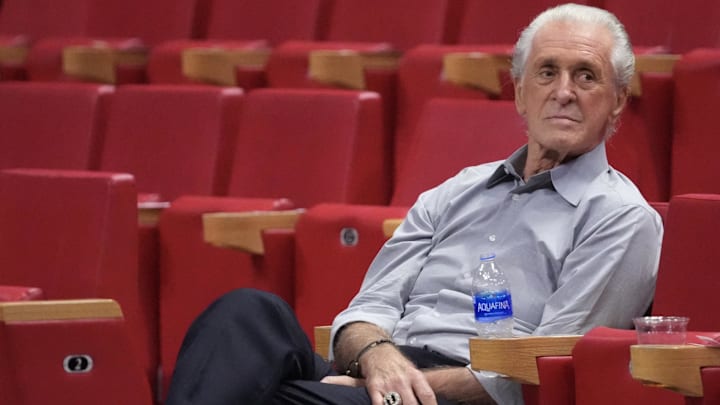Miami Heat team president staunchly opposes the idea of rebuilding and gap years. Nobody can blame him. Chasing wins, and championships, is way cooler than taking an immediate step or two back in hopes of eventually moving forward. Gap years and rebuilding stretches stink.
Riley needs to get over it anyway.
The 80-year-old C-Suiter once again made it clear after this past season that the Heat aren’t in the rebuilding business. The intention of this stance is noble. Its practice is debatable. But that’s besides the point. Riley has been with Miami, in some capacity, for about 30 years. He isn’t changing now, and authorizing a total long-term reset.
Embracing a gap year should be a different story. It is more temporary than a traditional rebuild, and frankly, it’s something that the Heat need—that can improve, if not save, their future.
Here is what a gap year in 2025-26 does for the Heat
Leaning into a gap year can be difficult if you’re teeming with enough talent to bank a bunch of wins. Miami is not. It rattled off just 37 victories in 2024-25, and could get even worse next season without trying when you consider how much Tyler Herro and Bam Adebayo have struggled to generate consistent offense independent of Jimmy Butler.
You know what? That’s perfectly okay! Removing expectations from the table allows head coach Erik Spoelstra to focus on development, and plumbing the depths of Kel’el Ware, Jaime Jaquez Jr., Nikola Jovic, and whoever Miami drafts at No. 20.
Losses will invariably pile up, even if the Heat are giving ample court time to Adebayo and Herro. That’s fine, too, Miami controls its own 2026 first-rounder, before having to send its 2027 selection to the Oklahoma City Thunder. A lottery pick will be waiting for the Heat at the end of it all.
How high that first-rounder lands is up to Riley and company. If they have an iron stomach for losing, they can enter the mix for a top prospect. They just have to structure the roster accordingly from the beginning, so as not to cede ground to more flagrant tank jobs.
Going this route requires a rest-and-maintenance program for Adebyao and Herro, and not much else. Miami is free to shop veterans for additional draft and prospect equity, but a supporting cast headlined by Andrew Wiggins and Kyle Anderson doesn’t put you in danger of winning too many games.
From there, with players like Robinson and Terry Rozier slated to come off the books next summer, the Heat can enter the 2026 offseason with over $30 million in cap space. That number skyrockets even higher if Wiggins declines his $30.2 million player option, or can be traded elsewhere.
Cap space doesn’t mean what it used to for every team, but the Heat are among the exceptions. Players want to be in Miami, and next year’s free-agency class is (for now) much deeper than this summer’s crop. Cap space can also be used to acquire big names via trades.
The gap-year path is better than the Heat's current direction
That’s the vision in a nutshell: treat the 2025-26 campaign like a rebuilding season, then enter next summer with a truckload of cap space, as well as a high draft pick you can integrate or trade to beef up a core of Adebayo, Herro, and Ware.
Despite Riley insisting the Heat needn’t explore major changes, the team is in a bind. They won’t have a ton of spending power this summer, don’t have the assets to outbid rivals in star trades, and desperately need a best offensive player.
Entering the Kevin Durant sweepstakes isn’t splashy enough to outshine the potential of a gap year. He turns 37 in September, and isn’t a floor general. Acquiring him at the expense of future assets is short-sighted, and won't assure entry into title contention.
Steering into a gap year is more effective. The Riley-era Heat know this for themselves. They finished 25-57 in 2003, drafted Dwyane Wade at No. 3, and the rest is, quite literally, history.
To be sure, that same outcome is not guaranteed to happen again. But the possibilities at the end of a gap year sure beat anything and everything else Miami has going on right now.
